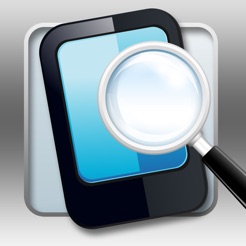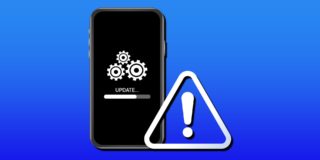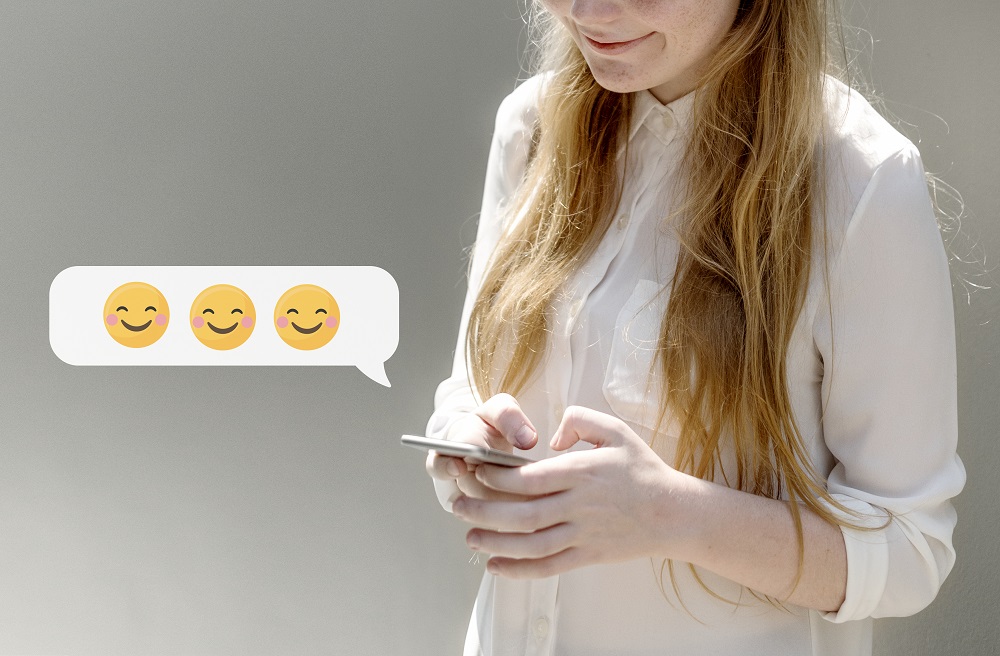How To Add your Contact Info to your Lock Screen Wallpaper

It should go without saying that our world has become more and more tech-driven over the years. So much so that our mobile devices have become something that most cannot imagine living without. Just a few moments without a cell phone can have some feeling lost. To think that you could misplace and lose it somewhere is unfathomable.
Unfortunately, this sort of thing happens daily, and yes, it can even happen to you. You could have left it on the bus, at work, in the coffee shop, or perhaps it may have fallen out of your pocket while riding home in that Uber. We’re only human after all and errors are a common occurrence. There are no surefire, foolproof methods to prevent this from happening, but there is something you can do ahead of time that may help retrieve it.
Sure, you could set up a tracking app that will help you locate it yourself, but that only really helps while it’s on. What about if someone else happens to find it first?
Add Contact Information To Your Mobile Lock Screen Wallpaper
Losing your phone is terrible. To think that your $700 (or more) device could be gone forever, or worse, in someone else’s hands. You’ll never get it back now, right? Believe it or not, good Samaritans do exist. While there’s no way to always expect that someone who finds your lost phone is going to return it to you, it’s easy enough to put your contact information on the lock screen. This way, individuals with integrity will know exactly who the owner is and can get it back to you.
“That’s actually a pretty good idea.”
This is one of the more simple steps you can take to aid in the recovery of a lost phone. Believing that good people still exist in 2019 is a meme unto itself but I assure you, they’re out there. Placing your email address or a secondary phone number on your lock screen wallpaper will provide the necessary information for anyone who happens upon your phone to reach you. Both Android and iOS devices are capable of pulling this off.
The safest bit of information you can add to the lock screen wallpaper would be your primary email address. Chances are that an email address would be easy to access and monitor for any possible updates on your phone’s whereabouts. Putting the lost phone’s phone number on the lock screen is completely pointless. A secondary line could be fine but you may not want that information getting out there if it’s a landline. An emergency contact number will do so long as you’ve been given permission to use it.
Placing your information on your lock screen isn’t a sure fire way to get your phone returned to you in case it’s ever lost, but it’s awfully hard for someone to return it if you don’t have this info there. Don’t make someone jump through hoops or think too hard when it comes to doing the right thing. If you ever hope to have your phone returned to you, ensure that the process is as easy and smooth as possible. Going forward, we’ll go over a few of the options you’ll have in being able to add the info to your lock screen.
Easy With Android
We can begin with Android’s method for adding owner info to the lock screen. Android owners have it pretty easy as the option is already built-in to the Settings. To check off the first task on the list:
- Go to your Settings menu and tap on the Security option.
- Tap on Owner info.
- This will present you with a window on where you can add the necessary information (if you have yet to add it to your phone).
- Check the box next to Show owner info on the lock screen.
- Type in your information that you’d like to be displayed.
- The message can be as short or as long as you’d like but there is a character limit. To go over the limit will cut the message off on the lock screen so try to keep it within the screen’s parameters. You’ll still be able to side scroll to finish off the entire message but it’d just be better if you didn’t provide a life story that someone will need to read through before finding relevant information.
- Tap the back button and your lock screen will now display the information you’ve provided.
Old School iOS
The process for older versions of iOS is a bit more convoluted than the one needed for an Android device. In the early days, iOS didn’t have any support for making contact information available on locked devices. This still holds true for those older models today.
You’re not likely to find an app that will help these older devices out so you’re looking at needing to create an image for your iPhone through image editing software. Once complete, you can add that image to the iPhone as wallpaper for your lock screen.
It’s a pretty clever workaround if you ask me. For those who fall into this category of iOS user, or just feel that making your own lock screen wallpaper sounds fun, to start this method:
- As stated, you’re going to need some sort of image editing software. Photoshop can provide you with a more professional looking finished project.
- Most folks likely don’t have Photoshop and may prefer a free option. For those, I recommend using GIMP. It’s a great alternative to Photoshop, completely free, and has a big enough user-base that add-ons can be found in abundance on a few designated sites. GIMP is available for Windows, MacOS, and Linux.
- You could make this whole process super simple by being as basic as possible. Black text on a white background is always an option. But who wants that as a lock screen wallpaper? The best thing to do is perform a google search and download an image (or create your own) that you think will look awesome on your iPhone. Just make sure that after you’ve found the perfect background image, you crop it so that it fits the correct dimensions for your iPhone screen size. This will make positioning the contact information a whole lot easier on you.
- Here is a breakdown of recent iPhone screen sizes in pixels:
| iPhone Resolutions | |
| iPhone Model(s) | Screen Resolution |
| iPhone X | 1125×2436 |
| iPhone 8 Plus | 1080×1920 |
| iPhone 8 | 750×1334 |
| iPhone 6, 6s, and 7 Plus | 1080×1920 |
| iPhone 6, 6s, and 7 | 750×1334 |
| iPhone 5, 5s, 5c, and SE | 640×1136 |
| iPhone 4, and 4s | 640×960 |
-
- In your image editor, go ahead and crop the image to make sure it fits the size noted above for your respective iPhone.
- Try and locate a nice spot toward the middle where you’ll want to create a box. The positioning of the box should make it so the information provided in it will remain visible on your iPhone’s lock screen. By placing it toward the lower-middle of the image, you should have it lower than the clock (top ribbon) that is shown on the iPhone.
- Once the spot is located, go ahead and draw a box and fill it with a darker color (black always works nicely). This is so that your text will stand out from the image. If you’d like, you can lower the opacity of the box so that it allows some of the image to show through.
- Use the text tool in your image editor to write your contact info within the box that you just created. A lighter color is necessary so that the text can be seen clearly.
- A basic font is preferred. Adding anything too crazy may make the information illegible so keep it simple.
- The information provided should consist of the best way in which a person can reach you other than the lost phone (obviously).
- Once you’re satisfied with your wallpaper, Save or Export it in a compatible image format that your iOS device can read. JPG and PNG are always good choices.
- Next, you’ll have to transfer the created image over to your iPhone. Any way that suits you will work. Connect the iPhone to your PC via USB cable, email it to yourself, or use an app like Dropbox or Google Drive. Any choice is the right one so long as you can access it from your iPhone.
- Head into the Settings app for the iPhone.
- Locate and tap Wallpaper, followed by Choose a New Wallpaper.
- Find the recently created image that you transferred over to your phone, and select it.
- You can use your iPhone’s built-in controls to adjust your image to fit perfectly.
- After adjusting the image, tap Set to finalize your choice.
- Your iPhone will display a new menu allowing you to choose whether you want to set your wallpaper for your lock screen, main wallpaper, or both. Choose whichever you prefer.
- Lock your phone to see how the wallpaper looks.
- If something doesn’t look right or the information is not easily discernible, you can adjust it using iPhone’s image tools or recreate the image all over.
Using The Over App
I mentioned that there were apps available for the iPhone that would make adding contact info to the lock screen much easier. The same can be said for Android. One app they both benefit from is the Over app. You can avoid the need to create your own images on a PC using the Over app. Easily place text over images right on your phone, no image editing software needed.
To use this method:
- Begin by downloading the Over app in either the App Store (iPhones) or Google Play Store (Android).
- Next, you’ll need to find the perfect image for your lock screen. Just like what was mentioned in the “Old School iOS” section, it’s a good idea to pick something close to the screen size of your phone.
- When an image has been found, launch the Over app.
- Using the app, locate the image you decided on, and open it.
- Two boxes will appear above the image. Select the one that allows text to be added.
- A cursor will appear, and you can then enter some text.
- Enter all of the information you care to, that best helps your chances the phone can be returned to you. An email address, secondary number, etc.
- Choose the color of your text wisely. Whichever color makes your text stand out from the image, is best.
- Tap Done.
- Press firmly down onto the text in order to move it around and position it in a place that is easily visible when the phone is locked.
- If you want to edit the text a bit more, you can swipe in the menu from the right side of the screen. Adjust the color, font, opacity, justification, and line spacing.
- Once you’re finished all editing, from the same menu, tap on Save.
- Your new wallpaper has now been created and is ready to be set.
- Head into Settings and follow the same steps provided in the “Old School iOS” section, steps 8 thru 11.
















